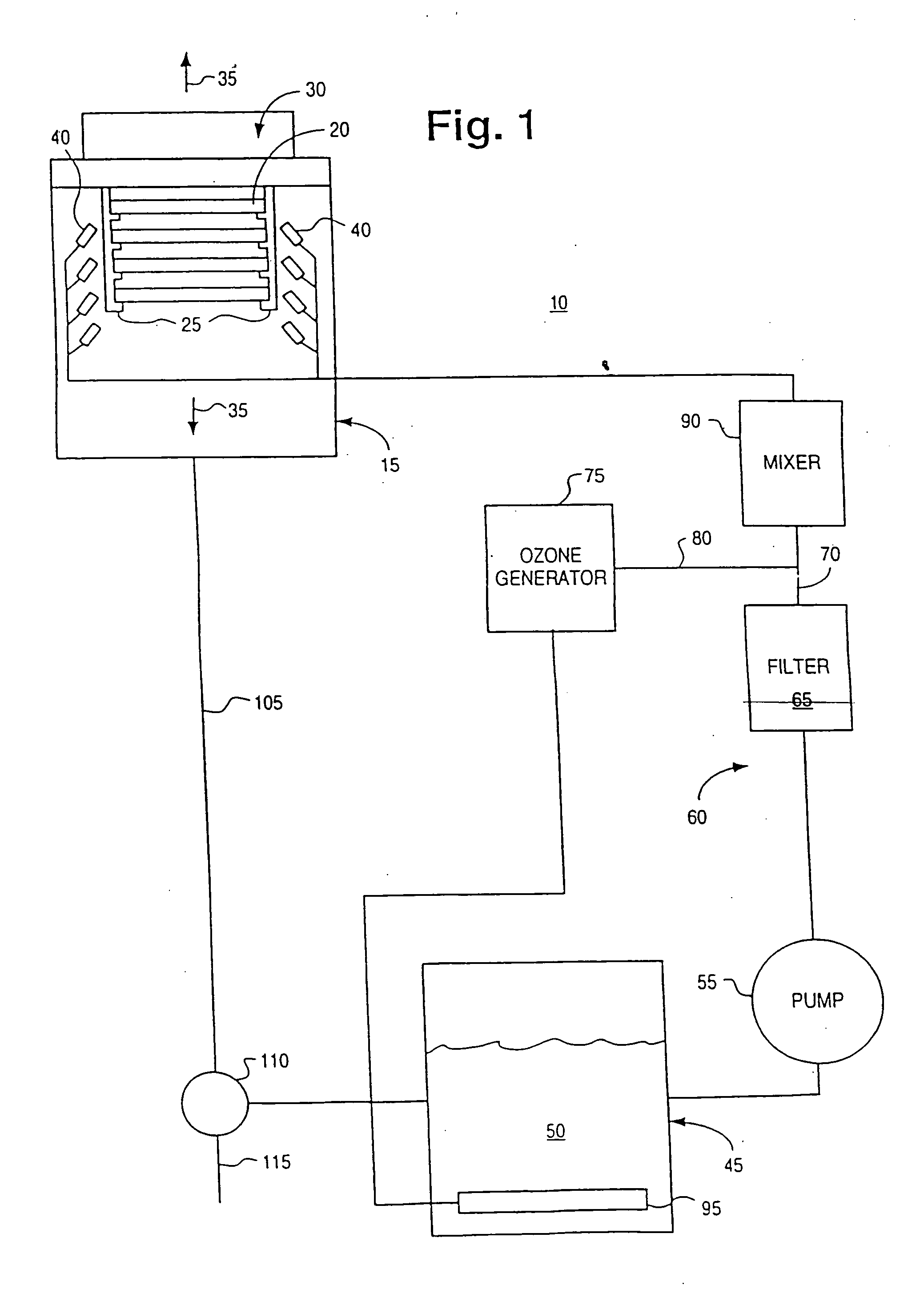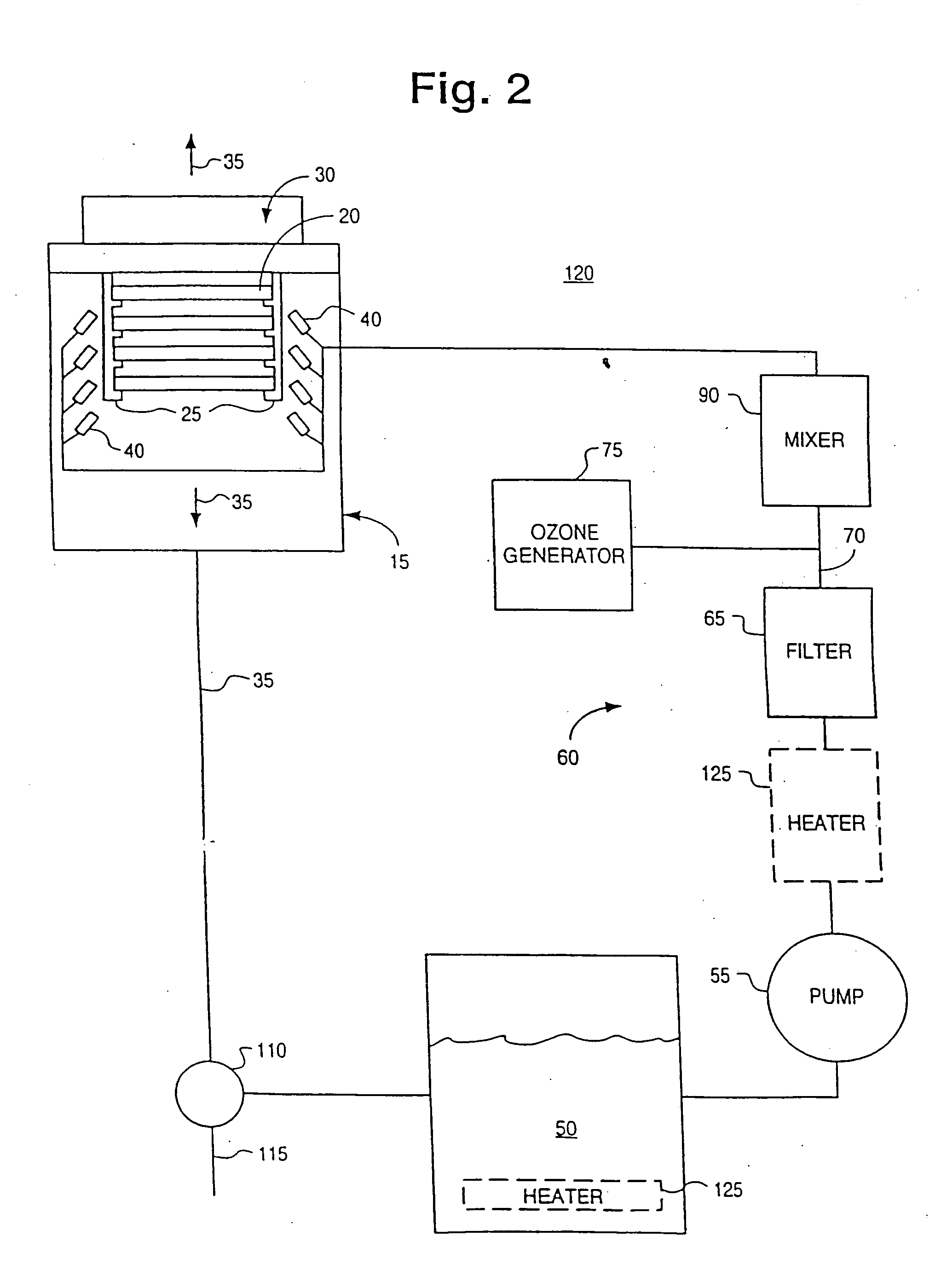Process and apparatus for treating a workpiece
a technology for treating and workpieces, applied in the direction of lighting and heating apparatus, chemistry apparatus and processes, cleaning using liquids, etc., can solve the problems of high consumption of water, high cost of chemicals, and devices highly susceptible to performance degradation
- Summary
- Abstract
- Description
- Claims
- Application Information
AI Technical Summary
Benefits of technology
Problems solved by technology
Method used
Image
Examples
Embodiment Construction
[0023] Referring to FIG. 1, the treatment system, shown generally at 10, includes a treatment chamber 15 that contains one or more workpieces 20, such as semiconductor wafer workpieces. Although the illustrated system is directed to a batch workpiece apparatus, it is readily adaptable for use in single workpiece processing as well.
[0024] The semiconductor workpieces 20 are preferably supported within the chamber 15 by one or more supports 25 extending from, for example, a rotor assembly 30. Rotor assembly 30 may seal with the housing of the treatment chamber 15 to form a sealed, closed processing environment. Further, rotor assembly 30 is provided so that the semiconductor workpieces 20 may be spun about axis 35 during or after treatment with the ozone and treatment liquid.
[0025] The chamber 15 has a volume which is minimized, and is as small as permitted by design considerations for any given capacity (i.e., the number and size of the substrates to be treated). The chamber 15 is ...
PUM
| Property | Measurement | Unit |
|---|---|---|
| thickness | aaaaa | aaaaa |
| thicknesses | aaaaa | aaaaa |
| temperatures | aaaaa | aaaaa |
Abstract
Description
Claims
Application Information
 Login to View More
Login to View More - R&D
- Intellectual Property
- Life Sciences
- Materials
- Tech Scout
- Unparalleled Data Quality
- Higher Quality Content
- 60% Fewer Hallucinations
Browse by: Latest US Patents, China's latest patents, Technical Efficacy Thesaurus, Application Domain, Technology Topic, Popular Technical Reports.
© 2025 PatSnap. All rights reserved.Legal|Privacy policy|Modern Slavery Act Transparency Statement|Sitemap|About US| Contact US: help@patsnap.com



